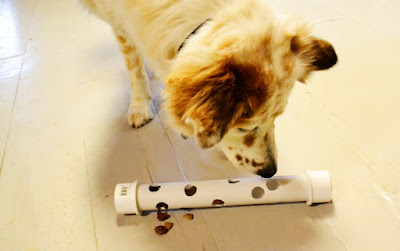Introducing a New Dog to Existing Dogs
When it comes to introductions, advance preparation and patience will be paramount. Make sure your current dogs/animals are able to cope peacefully and happily around dogs before you decide to bring another dog home. Multi-dog households can work very well, but they can also lead to serious fights and potential injury if proper management and guidelines are not in place.
If you have children in the home, you need to teach them how to stay safe around dogs, and make sure your new dog will be comfortable with children.

Introductions should occur slowly and should never be forced. Dog to dog introductions are best done on neutral territory, and I recommend that your current dog(s) meet the new dog at least twice so they can check each other out and interact, as well as taking the dogs for a walk together, before bringing the new dog home. Minimise face-to-face greetings (or those through fences) as much as possible, as these can get tense quickly.
You should stay calm at all times during these initial introductions, as any tension can be felt by the dogs. If you are having trouble with introducing a new dog into your home, then you should contact a qualified animal behaviourist or dog trainer for assistance before the situation gets out of control.
TIPS TO INTRODUCE A NEW DOG TO YOUR PACK
If the existing dog is a male, then it is wise to introduce a more submissive female into the mix and vice versa. Inter-female aggression is very common, as are fights between competing males, and while dogs of the same sex can co-habit peacefully, it is often better to mix the sexes up.
Initial introductions need to be made on neutral territory with both dogs on loose leashes, so that they have the ability to interact without the frustration of being held too tightly. If the initial meeting goes well, both dogs should be allowed to interact off leash in a safe area, giving them freedom to form a relationship.

Rewarding the existing dog when he or she behaves well around the new arrival will show the dog that the new dog’s presence means good things happen.
Walking the dogs individually a few times a week will also assist in strengthening the bond with you, as this is each dogs “special time” just with you! And you will get to know your new dogs’ personality even better!
Brushing or massaging your dogs improves the bond you share with them, and again gives them one on one time just with you!
TIPS TO TRANSPORT YOUR NEW DOG HOME
Having your existing dogs secured in your vehicle is essential for their safety (and it is also a legal requirement in NSW).
Putting your new dog into a good sized crate that is secured in your vehicle will help the dog to not panic, or injure itself, plus has the advantage of minimising any car sickness mess.
The use of a pheromone collar (such as Adaptil) on your new dog may really help him during the travelling and the first few weeks of settling into your home. My advice is to put it on at least an hour before travel is to commence so it has time to activate.
You may need to pull over if the dog is not travelling well. For some rescued dogs, travelling in the car can be traumatic and they believe they are going to be dumped or surrendered, as this may be what happened to them once before.
TIPS TO MAKE THINGS EASY AT HOME
Take your existing dogs in first, and put them in the back yard, then bring the new dog inside the house, and let him check out the new environment. Set up his/her crate/pen in a safe yet quite area.
Take your existing dogs in first, and put them in the back yard, then bring the new dog inside the house, and let him check out the new environment. Set up his/her crate/pen in a safe yet quite area.
Then swap, by bringing the existing dogs in, and taking the new dog out to explore the yard freely.
You can then let then all interact freely in the yard under your supervision to ensure that there is no territorial behavior going on, and if play starts to get intense, calmly intervene by bringing the over-excited dog inside to calm down.
Your new dog may not be house trained, so you need to be prepared keep a close watch for behaviours that indicate toileting is needed. He should however learn quickly from your other dog(s).

Should you need any assistance with any of the above, or something totally unexpected occurs, be sure to contact a qualified professional dog behavioural trainer who has first-hand experience with adopting and working with a rescued dog.
Janene Branc, Dogology® 2015
Janene Branc has been training dogs since 1995. She completed the Certificate IV in Dog Behavioural Training with the Delta Society of Australia in 2002 and the PetTech PetSaver Certificate course in 2012. She has attended many seminars on Agility, Obedience, Canine Musical Freestyle, Ethology & Canine Behavioural Management. She has been the NSW Regional Representative for the Association of Pet Dog Trainers (Australia) since 2010.













